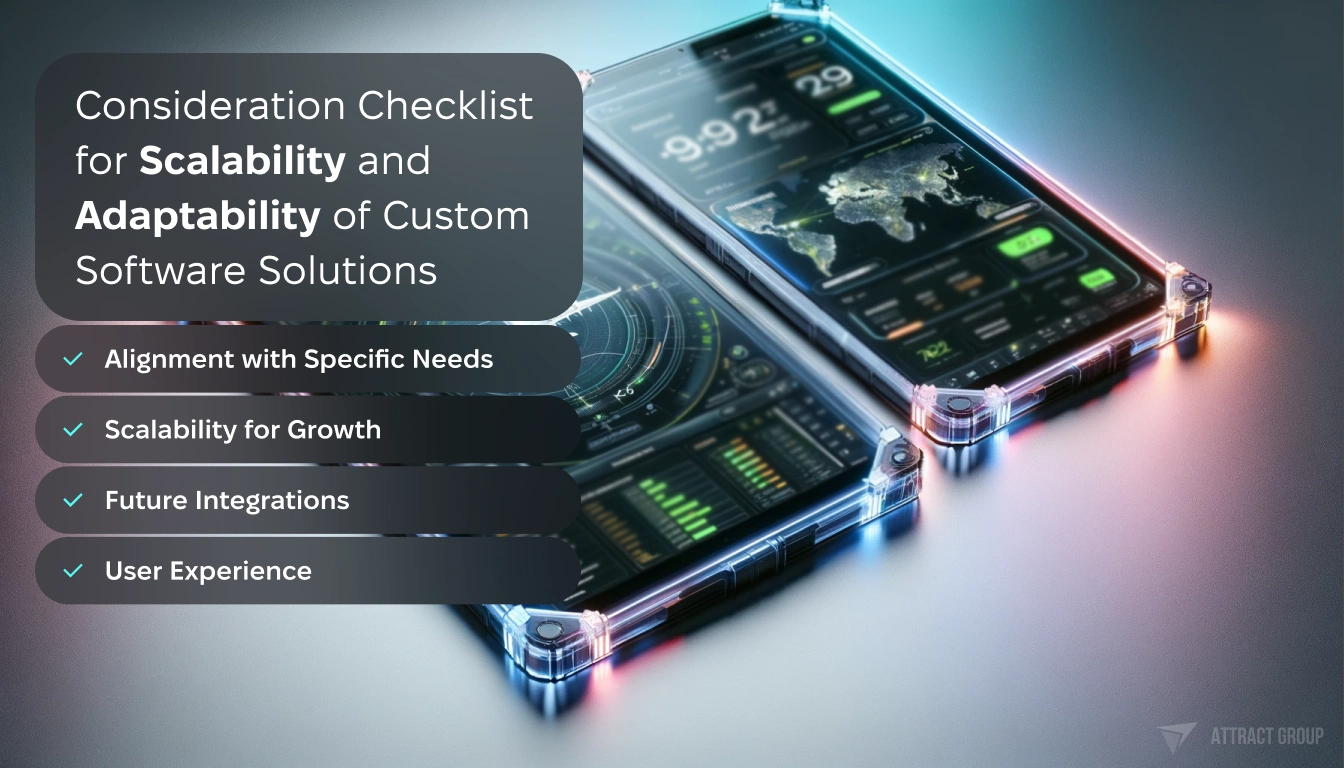Revolutionizing USA Air Travel: Next-Level Flight Tracking Software Solutions
 2 January 2024
2 January 2024? Listen to the Summary of this article in Audio
The landscape of aviation is rapidly evolving, and with it, the innovation in flight tracking software development is surging forward to meet the ever-growing demands of the industry. In the heart of this technological advancement stands Dev Technosys, a distinguished name within the realm of aviation software development. Recognized for their proficiency in creating robust and sophisticated flight tracking technology, Dev Technosys redefines what’s possible for aviation operations management across the United States.
The commitment to excellence that encompasses every facet of their aviation software solutions caters to a significant 68% of global travelers who now prefer air travel, setting the trends for industry expectations. Dev Technosys’s tailored applications, such as those resembling renowned platforms like Flightradar24 and FlightAware, showcase their ability to not just match but surpass user experience goals. Their United States aviation solutions are sculpted to serve airlines with precision, bringing forth an era of uncompromised efficiency and user experience tailored to the very core of customer needs.
Understanding that the aviation market size is poised to exponential growth, Dev Technosys drives the frontier of flight tracking software development, keeping in tune with an industry forecast marked at a substantial $118 billion by 2027. Embarking on a journey with Dev Technosys means embracing custom-created, future-proof, and scalable aviation technology that anticipates the expansion of your aviation business operations.
Key Takeaways
- Dev Technosys leads innovation in flight tracking software amidst an expanding aviation industry.
- Aviation software development caters to the current trend of air travel preference, enhancing operational efficiency.
- Apps akin to Flightradar24 and FlightAware reflect the heightened expectations for user experience in aviation solutions.
- Custom flight tracking technology propels businesses to meet the upcoming industry boom.
- Competitive, scalable solutions in United States aviation software support expandable business infrastructure.
- The foresight of market growth to $118 billion by 2027 drives the development of advanced flight tracking systems.
The Importance of Advanced Flight Tracking Technology in Modern Aviation
In the vast airspace of modern flight, the introduction of advanced flight tracking technology has precipitated a transformative effect on the operations and strategic decision-making of airlines. This technology forms the cornerstone of contemporary flight management software, enabling a seamless flow of information and a comprehensive view of airspace activities. It is a paradigm that significantly enhances the overall efficiency of modern aviation software systems, ensuring optimal use of resources and improved safety.

The ability to track and manage flights in real time, facilitated by sophisticated flight tracking software development, has become instrumental for operations managers, CEOs, and CFOs in orchestrating a harmonious dance of aircraft both in the sky and on the ground. Modern aviation software, exhibiting an exceptional level of fidelity in tracking, has essentially redefined how aviation industry leaders anticipate and respond to operational demands.
Recognizing the transformative capabilities of such technologies, structurally intricate firms like SkyNet Aviation have harnessed these advancements to revolutionize data coherence and management practices. The scope of their influence is vast, impacting everything from financial savings to empowering potentially limitless growth trajectories for aviation enterprises.
“Advanced flight tracking systems are more than just tools; they are comprehensive ecosystems that enable airlines to touch new operational zeniths and chart sustainable growth paths.”
It’s not merely a question of tracking airplanes; it’s about unleashing a suite of web and mobile applications tailored for dynamic flight planning, integrating cutting-edge weather services, and managing volumes of aviation data with unprecedented precision. All these aspects converge to become tools of vital importance for not just maintaining but dynamically enhancing the efficacy of operations across the modern skies.
| Feature | Impact on Aviation Operations |
|---|---|
| Real-time flight updates | Enables proactive management of schedules and resource allocation |
| Weather integration services | Facilitates safer and more efficient route planning |
| Data-driven decision making | Supports strategic planning and operational agility |
| Mobile application accessibility | Extends operational command outside traditional control centers |
In essence, the advent of advanced flight tracking technology serves as both the propellant and rudder, steering the aviation industry towards an era marked by insight, efficiency, and growth in tune with the forecasted market expansion. For those at the helm of aviation businesses, it is clear: embracing advanced tracking technology is not a luxury, but a necessity to thrive in the competitive skies of the future.
Key Features of Top-tier Flight Tracking Software
The aviation industry’s perpetual goal of maximizing efficiency and safety has given rise to sophisticated flight tracking software features that empower airlines to operate at unprecedented levels of precision. Cutting-edge solutions today enable robust real-time flight data analysis, intricate integration with air traffic control, and comprehensive weather services to maintain an edge in a highly competitive market.
Real-Time Flight Data Analysis and Reporting
At the core of modern aviation software solutions lies the capability to conduct real-time flight data analysis, crucial for optimizing flight schedules, forecasting aviation traffic trends, and understanding customer behaviors. This aviation data analysis prowess enables airlines to craft personalized offerings, ensuring they not only meet but exceed passenger expectations. Flawless execution of strategic decisions, grounded in real-time analytics, distinguishes industry leaders in the realm of aviation.
Our data scientists can develop custom analytics to uncover insights from your flight data.
Integration with Air Traffic Control and Weather Services
Seamless integration with air traffic control systems ensures that pilots and ground staff are always in sync, fostering an environment where safety and operational efficiency coexist. Coupled with accurate and timely data from weather services, flight tracking solutions significantly mitigate the risks posed by the unpredictable nature of flying conditions, thus bolstering both confidence and aviation safety.

Customizable Alerts and Notifications for Enhanced Safety
Central to safeguarding both crew and passengers is the smart implementation of customizable alerts and flight tracking notifications. This functionality delivers immediate insights into potential hazards, allowing preventive measures to be swiftly deployed. Whether relaying changes in weather patterns or signaling deviations from planned flight pathways, these alerts serve as an essential layer of safety and regulatory compliance.
In the end, the collaborative synergy between refined data collection, analytics, and real-time alert systems embodies the pinnacle of what top-tier flight tracking software can provide – a fortress of safety bolstered by the intelligence and efficiency of modern technology.
| Feature | Description | Benefits |
|---|---|---|
| Real-time Analysis | Live assessment of flight data | Enhanced decision-making capabilities |
| ATC Integration | Coordination with air traffic control systems | Smoother operations and safety management |
| Weather Forecasting | Updates on weather conditions affecting travel | Improved route planning and passenger safety |
| Alerts and Notifications | Automated warnings about potential risks | Proactive risk mitigation and compliance aid |
“By harnessing the power of contemporary flight tracking software features, aviation stakeholders have an invaluable resource at their disposal, enabling both proactive management and strategic foresight in day-to-day operations.”
- Streamlined access to real-time flight data enables airlines to stay ahead of the curve.
- Advanced aviation data analysis tools are reshaping the future of air travel customer services.
- Key aviation software solutions come with critical alerts, safeguarding the industry’s commitment to safety.
- Properly leveraged flight tracking notifications can mean the difference between smooth operations and logistical challenges.
Evaluating the need for thoughtful technological integration, it’s unmistakably clear that these key features are not just added benefits but essential requisites for thriving in today’s fast-paced aviation landscape.
Innovative Solutions: How FlightAware and Flightradar24 Are Changing the Game
The aviation industry has long been a fertile ground for cutting-edge innovations, and in the realm of flight tracking software, companies like FlightAware and Flightradar24 are rewriting the rules of the skies. These platforms exemplify the pinnacle of innovative flight tracking solutions, enabling users across the globe to access and analyze commercial and private flight data with an ease that was once inconceivable.

These trailblazers in aviation technology have democratized flight data, offering the general public, aviation enthusiasts, and professionals the ability to monitor air traffic in real-time. This revolution not only underscores transparency in aviation but also enhances safety by providing comprehensive flight information that was previously accessible only to industry insiders.
“FlightAware and Flightradar24 have dramatically shifted the landscape of aviation by providing intricate layers of data and real-time visibility that serve to optimize the management and operational strategies of airlines worldwide.”
For those keen on tracking a particular flight, anticipating a family member’s arrival, or simply indulging in the global tapestry of air traffic, these platforms have removed the complexity and brought flight tracking into the palm of one’s hand. Below is a comparison of the transformative features these innovative tools offer:
| Feature | FlightAware | Flightradar24 |
|---|---|---|
| Live Flight Tracking | Real-time data on all commercial flights | Real-time movement on a detailed map |
| Flight Information | Flight status, delays, and cancellations | In-depth flight data including aircraft types and flight paths |
| Global Coverage | Worldwide tracking capabilities | Extensive coverage with global reach |
| User Accessibility | User-friendly interface for easy access | Intuitive app experience for enthusiasts and professionals |
| APIs for Developers | Comprehensive APIs for custom solution integration | Extensive APIs supporting various application needs |
The influence of FlightAware and Flightradar24 extends far beyond individual curiosity, contributing to a broader understanding of aviation technology. From facilitating improved airline operations to augmenting airspace safety protocols, their offerings have granted an unprecedented level of control and visibility.
As we continue to navigate through an era where data reigns supreme, the ascendancy of these advanced platforms reflects a deep-rooted shift towards a more informed and connected aviation community. Their indispensable role in the aviation ecosystem will undoubtedly continue to expand as they pioneer the next wave of progress in flight tracking technology.
- FlightAware’s sophisticated real-time flight tracking fosters a new standard for transparency.
- Flightradar24’s detailed map visualizations provide a unique, interactive way to view air traffic.
- Both platforms deliver cutting-edge solutions that enhance the aviation industry’s efficiency, safety, and customer experience.
At its core, the evolution brought forth by FlightAware and Flightradar24 is a testament to human ingenuity — validating the claim that in today’s age, information indeed is power. This power is not wielded for dominance, but for the collective improvement of the aviation sector, signaling a future where innovative flight tracking solutions continue to elevate our understanding of the skies above.
Custom Development vs. Off-the-Shelf Software: Which is Right for Your Business?
In the aviation industry, choosing between custom software development and off-the-shelf solutions is not just a matter of preference but strategic alignment. Customized aviation solutions are uniquely designed to meet very specific operational needs, moving beyond the one-size-fits-all approach that off-the-shelf software often provides.
Tailoring Software to Meet Specific Operational Needs
For businesses requiring highly tailored solutions, custom software development emerges as an indispensable asset. Customized solutions rigorously cater to the distinctive needs of aviation operations, offering flexibility and efficiency. This kind of deep customization enables businesses to streamline processes, such as ticket booking or flight navigation, in a manner that seamlessly integrates with their existing workflow.
“Utilizing tailored aviation solutions allows for an advantageous alignment of software functionality with the unique challenges and demands faced by airlines, fostering a competitive edge.”
For instance, when enterprises like Dev Technosys take on a project, their approach is to create software with a user-friendly interface, empowering airlines to manage flight schedules, oversee crew management, and optimize various business operations, all while taking into account the airline’s unique specifications and specific operational needs.
Scalability and Adaptability of Custom Software Solutions
The dynamic nature of the aviation sector demands software that can not only serve present needs but also adapt to future challenges and expansions. Thus, scalability in aviation software becomes a primordial attribute. Custom software solutions, showcased by firms like Dev Technosys, are inherently scalable, crafted to accommodate the growth trajectory of aviation businesses with ease.

The real value of such customized aviation solutions lies in their adaptability of custom software, which allows for expansions and integrations without disrupting existing operations—a trait not commonly found in off-the-shelf software. By laying a robust foundation now, custom software ensures that airlines are well-equipped to evolve and respond to emerging trends in the aviation landscape.
| Consideration | Custom Software | Off-the-Shelf Software |
|---|---|---|
| Alignment with Specific Needs | Highly tailored to business operations | General features that may not fit all needs |
| Scalability for Growth | Designed with expansion in mind | May require significant adjustments or replacements |
| Future Integrations | Facilitates seamless technology integration over time | Could present compatibility issues with new technology |
| User Experience | Customized for intuitive use for the specific user base | Potentially cumbersome or irrelevant features |
In the end, the choice between custom and off-the-shelf software will hinge on the priorities of your aviation business, whether they are immediate utility, potential growth, or a strategic blend of both. However, for those seeking longevity and bespoke functionality, the adaptability of custom software firmly positions it as the frontrunner in driving operational success and achieving long-term objectives within the aviation industry.
- Custom software enhances the organization and management of specific aviation business operations.
- Scalable solutions support the natural expansion of aviation services without compromising efficiency.
- Adaptability is a cornerstone in custom software, ensuring that the future of aviation businesses is resilient to change.
Schedule a consultation with our experts to discuss how tailored software can optimize your airline’s operations.
The Role of AI and Machine Learning in Flight Tracking Software Development
The intersection of AI in aviation and machine learning with aviation software development is creating a paradigm shift in how flight operations are conducted. Through the integration of advanced AI-ML algorithms, companies like Dev Technosys and RisingMax Inc are at the forefront of engineering sophisticated AI-ML aviation software. This software is not only able to make accurate predictions but also enhances safety and improves overall customer support.
“AI and Machine Learning are the twin engines that are propelling flight tracking software development to new altitudes of operational efficiency and safety.”
These transformative technologies enable aircraft to learn from data, identify patterns, and make decisions with minimal human intervention. The capabilities offered by AI-ML are multi-faceted, ranging from predictive maintenance, which anticipates equipment failures before they occur, to personalized travel experiences for passengers.

Predictive Maintenance: An AI-ML Marvel in Aviation
Incorporating machine learning into flight tracking systems allows airlines to implement predictive maintenance strategies. This innovative approach to maintenance can be a game-changer in reducing unscheduled aircraft downtime, thus optimizing fleet availability and significantly decreasing operational costs.
| Benefits of AI-ML in Predictive Maintenance | Impact on Aviation |
|---|---|
| Failure Prediction | Reduces unexpected breakdowns and increases aircraft reliability |
| Maintenance Scheduling | Improves fleet management and resource allocation |
| Cost Efficiency | Lowers maintenance expenses by preventing major repairs |
| Data-Driven Decisions | Allows for more informed and strategic operational planning |
Machine learning algorithms can process massive volumes of real-time data from aircraft sensors, helping to predict potential system failures and reducing the risk of delays caused by mechanical issues. The proactive nature of this technology ensures that maintenance crews can respond to alerts swiftly, thereby enhancing overall flight safety.
Enhancing Customer Support with AI
Customer support is another arena where AI-driven solutions are revolutionizing the aviation industry. By encouraging the adoption of sophisticated AI-ML aviation software, airlines are providing customers with instant access to flight information, baggage tracking, and other travel-related inquiries, effectively streamlining the customer service experience.
- AI Chatbots for 24/7 Assistance
- Machine Learning for Personalized Travel Offers
- AI-Powered Insights for Flight Preferences
By leveraging AI in these customer-facing processes, not only do airlines deliver enhanced satisfaction, but they also gather valuable insights into customer behaviors and preferences—insights that are invaluable for tailoring services and fostering customer loyalty.
“In the burgeoning field of aviation software development, the implementation of artificial intelligence and machine learning technologies stands as a cornerstone of innovation, driving the evolution of more intelligent and reactive flight tracking systems.”
AI-ML aviation software is undeniably reshaping the narrative of flight tracking solutions, providing the aviation industry with tools that enhance agility, foresight, and resilience in a dynamic operational environment. The precise and predictive capabilities of AI-ML not only boost performance but also carve a path toward a future where aviation operations are safer, more customer-oriented, and unequivocally efficient.
Ensuring Data Security and Privacy in Aviation Software
In the modern age where data breaches have become alarmingly common, aviation data security has skyrocketed in importance. Aviation industry entities place a premium on deploying software with impenetrable security measures. Regulatory standards and protocols operate as the first line of defense against potential vulnerabilities, ensuring privacy in aviation software is upheld.

Adherence to Regulatory Standards and Best Practices
With the landscape of threats constantly evolving, aviation companies are turning to cutting-edge technologies, such as blockchain, to provide additional layers of security. This adherence to regulatory standards is not merely about compliance, it is about instilling confidence among passengers and stakeholders that their sensitive data remains private and secure.
Regulatory bodies like the International Air Transport Association (IATA) and Federal Aviation Administration (FAA) play critical roles in establishing these benchmarks. Rigorous privacy regulations are in place that aviation software must meet to ensure data security, with developers and organizations working in tandem to adhere to them.
| Regulatory Body | Impact on Aviation Software Security |
|---|---|
| International Air Transport Association (IATA) | Sets global standards for data security and passenger privacy |
| Federal Aviation Administration (FAA) | Enforces rigorous aviation software guidelines in the United States |
| European Union Aviation Safety Agency (EASA) | Oversees aviation safety and data protection within EU jurisdiction |
| General Data Protection Regulation (GDPR) | Provides strict data privacy mandates affecting global aviation businesses |
Blockchain technology stands at the forefront of ensuring aviation data security. It is increasingly leveraged to enhance traceability and transparency, vital components in the realm of privacy in aviation software. Through decentralized ledger technology, blockchain delivers a verifiable and immutable record of all transactions, markedly increasing the integrity and security of data exchanges within aviation systems.
“In an industry as complex and interconnected as aviation, the infusion of blockchain as a security pillar represents a monumental stride forward in protecting sensitive data and ensuring robust privacy protocols are in effect.”
Moreover, companies are also taking proactive measures by adopting best practices in software development, such as regular security audits, end-to-end encryption, and meticulous risk management strategies. Together, these practices form a defensive shield, safeguarding invaluable information from unauthorized access and digital threats.
- Employment of end-to-end encryption to protect data in transit and at rest.
- Conducting routine security audits to identify and rectify vulnerabilities.
- Implementing access controls and authentication measures to restrict data to authorized personnel.
Ultimately, as the aviation sector continues to grow and digitize, the responsibility of maintaining high-caliber aviation data security and privacy standards grows alongside. The diligent application of these regulatory standards and innovative technologies demonstrates not only compliance but a committed investment in the trust and safety of aviation clientele worldwide.
How User Experience (UX) Design Impacts Aviation Software Effectiveness
The digital evolution of the aviation industry has pivoted the emphasis towards user experience (UX) design, underpinning the comprehensive effectiveness of aviation software systems. At the vanguard of this user-centric approach is Dev Technosys, emphasizing impactful UX in aviation, where sophisticated interfaces are meticulously woven into the fabric of their custom software solutions.
Understanding that the distinct end-user interaction significantly determines the adoption and efficacy of aviation software, Dev Technosys infuses every pixel and code line with UX principles. This strategic blend of technology and ergonomics ensures that pilots, ground staff, and aviation administrators engage with software built upon the bedrock of navigability, efficiency, and satisfaction.
“An intuitive user interface is the bridge between the sophisticated functionality of aviation software and the user’s ability to leverage its full potential.”
Integrating UX design is more than aesthetics; it’s a crucial determinant in reducing operational complexities and enhancing user satisfaction, leading to a surge in software utilization and productivity.

UX design’s imprint on software development transcends the superficial level, reaching the core of functionality and rendering the software not only usable but inherently intuitive. This focus on user experience tailors each interaction within the software environment to be more engaging and less error-prone, consequently augmenting aviation software effectiveness.
| UX Feature | Impact on Aviation Software | User Benefit |
|---|---|---|
| Clear Navigation | Reduction in training time and user error | Enhanced operational efficiency |
| Responsive Design | Consistent experience across devices | Uninterrupted workflow flexibility |
| Interactive Elements | Higher engagement and software utility | Increased user satisfaction |
| Feedback Mechanisms | Facilitates continuous improvement | Software that adapts to user needs |
The resonance of impactful UX in aviation ripples across all facets of an airline’s operations, ensuring that every digital interaction elevates rather than encumbers. Consequently, the ripple effect of proficient UX design extends to customer satisfaction, as streamlined and effective airline operations inevitably lead to a better traveler experience.
- Optimized UX design translates to fewer operational disruptions.
- User-centered software design increases task efficiency and data accuracy.
- Intuitive interfaces foster swift adoption rates and reduced reliance on extensive training.
In an ecosystem as intricate as aviation, where stasis equates to regression, the harmonization of software functionality with superior UX design is no longer discretionary—it’s imperative. Companies like Dev Technosys that have realized and harnessed the power of UX design in aviation software continue to set benchmarks for industry-wide adoption and effectiveness, paving the runway for a future where aviation software is as intuitive to navigate as it is indispensable to operations.
Bridging the Gap: Mobile Solutions for Seamless Flight Management
The aviation sector has witnessed an unprecedented surge in the demand for mobile flight management solutions, punctuating the need for agile and accessible platforms that cater to a range of devices. In a market that is rapidly expanding, harnessing the capabilities of iOS aviation apps and Android aviation software is fundamental to constructing an interconnected framework that supports seamless flight management.

Developing for Multiple Platforms: iOS, Android, and Beyond
When efficiency and adaptability are paramount, the development of aviation software needs to transcend traditional boundaries. Pioneers like Flightradar24 have observed the necessity for cross-platform accessibility, delivering experiences on iOS aviation apps that are as robust as those on Android aviation software. This strategy ensures that every user, irrespective of their device preferences, enjoys a unified and seamless flight management experience.
Achieving such a comprehensive reach requires a meticulous approach to software development, one that respects the unique characteristics of each platform while maintaining a consistent core functionality. Let’s explore how companies are enhancing user accessibility and operational efficiency in aviation through mobile solutions:
| Platform | Advantages | Considerations |
|---|---|---|
| iOS Aviation Apps | Secure environment, superior user experience, strong brand loyalty | Conformity to Apple’s strict App Store guidelines and ecosystem |
| Android Aviation Software | Flexibility, wider market reach, customizable user interface | Fragmentation across different manufacturers and versions |
| Web Platforms | Broader accessibility, no installation required, cross-device compatibility | Dependence on internet connectivity, variances in browser compatibility |
| Hybrid Solutions | Combination of native and web app advantages, cost-effective development | Potential performance trade-offs, higher complexity in maintenance |
As the data highlights, the choice of platform entails a strategic balance between user appeal and practical constraints on development. It is not simply about coding for different operating systems but crafting an experience that feels native to each while supporting the overarching goal of efficient flight management.
The embrace of mobile technology in aviation software signifies not just a response to user trends but an acknowledgment of mobile as the new standard in flight operations management.
- Utilizing iOS aviation apps attracts users inclined towards a premium, secure mobile experience.
- Developing Android aviation software opens doors to a larger pool of users due to Android’s expansive market share.
- Hybrid and web-based solutions offer versatility, providing a pragmatic route to reach users across all platforms efficiently.
In sum, the advancement of mobile solutions in aviation software development is revolutionizing how we interact with and manage our flight operations. It’s a move that not only brings greater efficiency and accessibility to the industry but also aligns with the modern user’s expectations for convenience and connectivity, regardless of the device in their hand.
Conclusion
In summary, the bourgeoning field of flight tracking software development in the United States is setting the course for the future of aviation, steering it towards a horizon that heralds immense growth. Dev Technosys, RisingMax Inc., and other key players are instrumental in nurturing this advancement, offering tailored aviation solutions that are not just a novelty but a necessity in today’s technologically driven airspace. As we gaze into the expansive skies of an industry sized to reach $118 billion by 2027, these innovations render a blueprint for excellence and forward-thinking agility.
The integration of scalable aviation technology, bolstered by the prowess of AI and Machine Learning, crafts a flight path layered with precision, safety, and personalized user experiences. These advancements converge on a singular point—efficiency. With every stride in technology, from FlightAware and Flightradar24’s trailblazing platforms to the emergent ubiquity of mobile solutions, the industry is reshaping the way aviation software enhances the traveler’s journey and the operator’s oversight.
As the market ascends, so does the gravity of choosing solutions that propel an organization’s potential. The evolution from off-the-shelf software to highly tailored aviation solutions underpins this transition, carving out strategies that are distinct as they are innovative. By leveraging aviation software advancements, firms strategically position themselves to conquer the challenges of contemporary aviation, solidify user satisfaction, and capitalize on a future rife with possibilities.
Ensure compliance and security with our encrypted, blockchain-based solutions.
FAQ
What is flight tracking software development?
Flight tracking software development involves creating applications and systems that enable the monitoring and management of aircraft movements. These solutions gather and analyze real-time flight data, helping airlines, airports, and service providers to improve operational efficiency, enhance safety, and provide better customer service.
Why is advanced flight tracking technology important in modern aviation?
Advanced flight tracking technology is critical in modern aviation because it provides timely and accurate information about aircraft positions and movements. This technology aids in decision-making, helps to minimize delays, ensures safety, and improves overall operational efficiency in the fast-paced aviation industry.
What are the key features of top-tier flight tracking software?
Top-tier flight tracking software typically includes real-time flight data analysis and reporting, integration with air traffic control and weather services, and customizable alerts and notifications. These features allow for enhanced safety, increased operational efficiency, and improved management of flights.
How are FlightAware and Flightradar24 innovating the flight tracking software industry?
FlightAware and Flightradar24 are innovating the flight tracking software industry by providing comprehensive, real-time flight information through accessible web and mobile platforms. Their innovative solutions offer detailed maps, extensive data analytics, and other advanced features that enhance the user experience and accessibility.
What are the benefits of custom aviation software development?
Custom aviation software development offers tailored solutions that meet the unique operational needs of airlines and airports. It ensures scalability, allowing businesses to adapt and expand their operations easily. Custom solutions also support integration with a company’s existing systems and can be modified as business requirements change.
How do AI and machine learning contribute to flight tracking software development?
AI and machine learning contribute to flight tracking software development by enabling predictive maintenance, enhancing customer support, and improving the accuracy of flight tracking systems. These technologies allow for smarter automation, data-driven decision-making, and more efficient operations in the aviation industry.
Why is data security and privacy critical in aviation software?
Data security and privacy are critical in aviation software because the industry handles sensitive and confidential information, including passenger data and flight operations details. Protecting this data is paramount to complying with regulatory standards, preventing cyber threats, and maintaining trust with passengers and stakeholders.
How does UX design impact the effectiveness of aviation software?
UX design greatly impacts the effectiveness of aviation software by ensuring that the software is intuitive and easy to navigate. Well-designed user interfaces enhance the end-user experience, leading to higher adoption rates and more efficient use of the software, which ultimately contributes to smoother aviation operations.
What is the importance of developing aviation software for multiple platforms?
Developing aviation software for multiple platforms, such as iOS and Android, is important because it ensures that users can access flight management tools on the devices they prefer to use. This cross-platform accessibility broadens the reach of the software, providing seamless and convenient flight tracking capabilities to a larger audience.









